The U.S. Marine Corps will field the ATAWS on its F/A-18 Legacy Hornet fleet starting in early 2026.
The Naval Air Warfare Center Weapons Division has announced on Nov. 19, 2025, that the U.S. Marine Corps F/A-18 Legacy Hornet fleet will soon receive the Automatic Terrain Awareness and Warning System (ATAWS). The certification of the new system is the result of a joint test program by the “Dust Devils” of Air Test and Evaluation Squadron (VX) 31 at Naval Air Warfare Center Weapons Division, in partnership with the “Salty Dogs” of VX-23 at Naval Air Station Patuxent River, Maryland.
Long-Awaited Capability
The press released notes how Controlled Flight Into Terrain (CFIT) has long been one of tactical aviation’s most unforgiving hazards. In 2022, the U.S. Air Force said CFIT incidents account for 26 percent of aircraft losses.
Generally, CFIT occurs when a fully functional aircraft is unintentionally flown into the ground. This can happen for a variety of causes, with two notable ones being Spatial Disorientation (Spatial-D) and G-induced Loss Of Consciousness (GLOC).
Spatial Disorientation is the inability to determine one’s position, location, and motion relative to their environment. This can happen not only in fighter jets, but in every type of aircraft, both military and civilian.
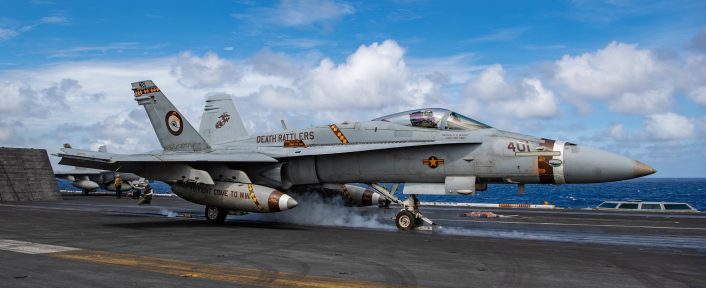
A situation that commonly causes Spatial-D is the flight in Instrument Meteorological Conditions (IMC), where bad visibility conditions would prevent a pilot from using external reference points and, in some cases, his senses would stop to “agree” with the current attitude of the aircraft. For an instance, the pilot’s senses could be tricked to think the aircraft is in level flight, while in reality it is in an inverted dive.
GLOC could happen during maneuvers with high g-loading, which draw blood away from the brain and towards the lower part of the body. GLOC is not completely sudden, as it is preceded by tunnel vision, greyout and blackout.
While the earlier phases would only see a pilot temporarily visually impaired, GLOC is a complete incapacitation. According to statistics, this incapacitation averages 12 seconds, followed by 15 seconds of recovery from the event.
The press release noted that, between 2010 and 2016, the Navy and Marine Corps lost several F/A-18 Hornets in training and operational mishaps. These losses reinforced the need for an automatic safeguard that could save aircrew and aircraft from potential CFIT events.
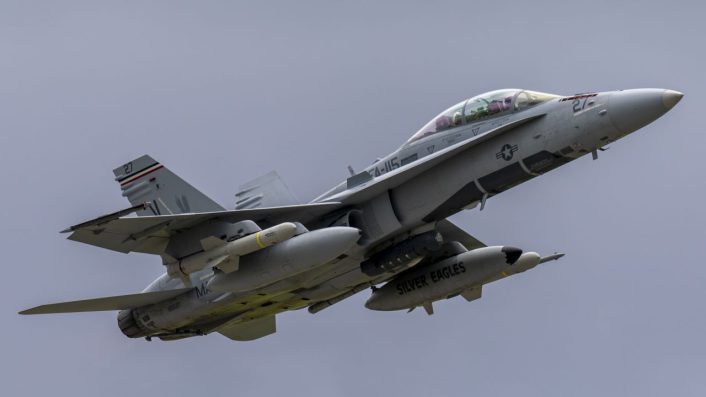
Notably, the press release goes on to mention that this work was inspired by the Air Force’s Automatic Ground Collision Avoidance System (AGCAS), which in 2022 has been credited for saving 12 F-16s and three F-22s from crashing. Marine aviators and flight test teams pushed for a similar capability in the F/A-18A–D, launching development under the Navy’s program office for the aircraft, PMA-265.
“The Marine Corps F/A-18A–D legacy Hornet community was the driving force behind ATAWS,” said Lt. Col. Timothy Burchett, commanding officer of VX-31. “Every Hornet saved means one more aircraft and aviator available for combat.”
ATAWS
The Naval Air Warfare Center Weapons Division explained ATAWS builds upon the Hornet’s existing Terrain Awareness Warning System (TAWS). TAWS, also present on the Super Hornet and hosted in the Digital Map Computer (DMC)/Digital Video Map Computer (DVMC), alerts the pilot of potential CFIT risks.
The system continuously predicts the aircraft’s flight path relative to the earth’s surface, using terrain data, altitude, speed and attitude to calculate when a collision is certain without pilot action. When the system’s calculated flight path shows a crash is nearly imminent, visual and audible warnings are issued in the cockpit.
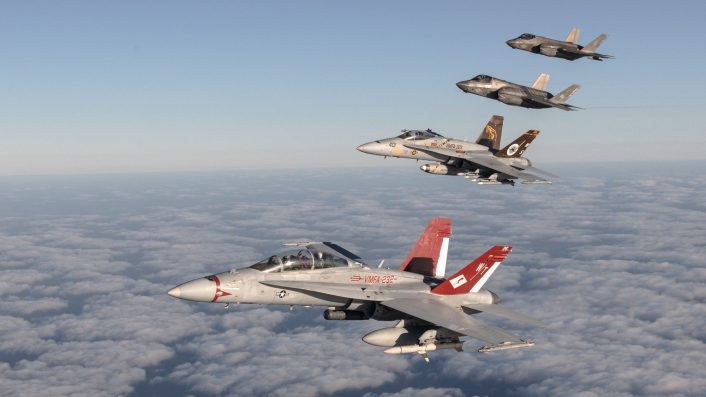
If the pilot fails to respond, ATAWS takes over and levels the wings automatically, before a rapid pull-up to clear the terrain. Once the aircraft is at a safe altitude, ATAWS returns the control of the aircraft to the pilot.
The service also explained that, since legacy Hornets use only manual throttles and don’t feature auto-throttle capability, ATAWS can only intervene through flight control inputs. The service further stressed that ATAWS only engages only after a pilot has missed all warnings and there’s no longer time for a human response, and is thus the last chance for a successful recovery.
“Any time a system is designed to intentionally take control of the aircraft away from the pilot, extreme diligence is required,” Burchett said. “We had to be absolutely certain it would not interfere with a mission or take action when it shouldn’t.”
Testing
According to the press release, the testing lasted from 2023 to 2025. VX-31 and VX-23 conducted a joint test campaign, divided into three phases, to ensure ATAWS operated safely and predictably in various flight conditions. Collaboration was a big part of the ATAWS test effort, as it united VX-31’s mission systems experts with VX-23’s flight sciences team into one integrated test unit.
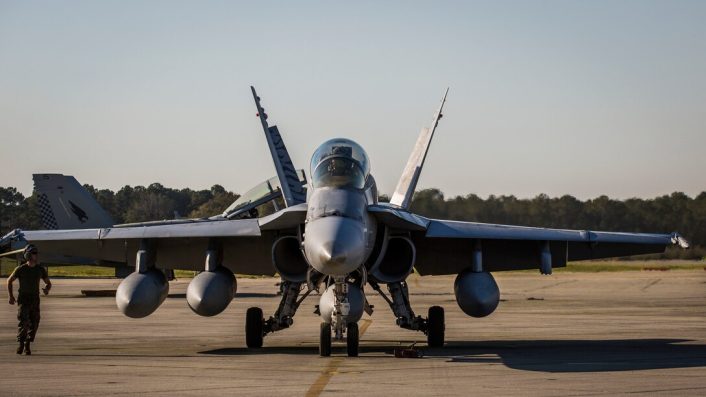
“This was the best test program I have ever been a part of,” said Burchett. “The teams from Patuxent River and China Lake were so well integrated that you couldn’t tell where each team member came from if you didn’t already know the people involved.”
As part of the first phase, VX-23 completed 32 flights evaluating system logic responses to different dives and recoveries. VX-31 then flew 16 flights during the second phase, focused on nuisance testing over flat desert and mountainous terrain to make sure the system would not trigger false warnings or recoveries.
The final phase combined both squadrons at China Lake for 16 full-performance flights over seven consecutive weeks. The flights included maneuvers representative of operational scenarios, such as high-G maneuvers and low-angle strafing runs, and only minor anomalies were observed.
“The team executed 177 test points that challenged and stressed the system,” said David Pineda, a VX-31 flight test engineer. “Those test points validated that ATAWS met or exceeded the modeled performance.”
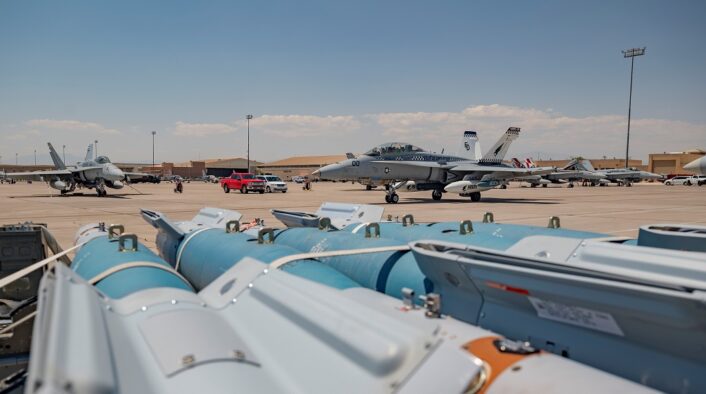
Maj. Brian “Wedge” Walpole, VX-31 Legacy Hornet department head, said the system’s consistency between simulator and actual performance confirmed its readiness. “Regardless of terrain or flight profiles, the system flew like the simulator, and we verified the model through flight test,” Walpole said.
Future
The Naval Air Warfare Center Weapons Division says that, following PMA-265’s approval, ATAWS will be fielded to the F/A-18 fleet in early 2026.
“ATAWS directly advances warfighter capability by ensuring assets are available for forward-deployed power projection,” Burchett said. “Every time an aircraft is lost to a mishap, it directly degrades the ability of the Marine Corps to forward project power.”
Maj. Ken “Lloyd” Endicott, VX-9 operational test director, stressed the system “makes protection from CFIT far more robust, but it doesn’t replace disciplined flight planning and conduct.”
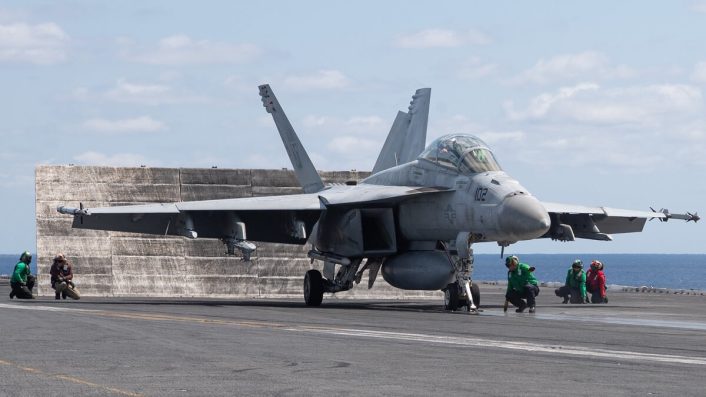
Lessons learned from the legacy Hornet during the integration of ATAWS will now be applied to the integration of the Automatic Ground Collision Avoidance System (AGCAS) in the F/A-18E/F Super Hornet and EA-18G Growler, says the service. VX-31 and VX-23 will incorporate system improvements based on the legacy Hornet test results and take advantage of additional functionality of the Super Hornet, such as potentially automating a throttle response.
“The results of the test were incredibly successful, which is an absolute testament to the whole team of designers, engineers, and test pilots who diligently worked the program for many years,” he said. “ATAWS will save lives. There’s no higher return on investment than that.”









